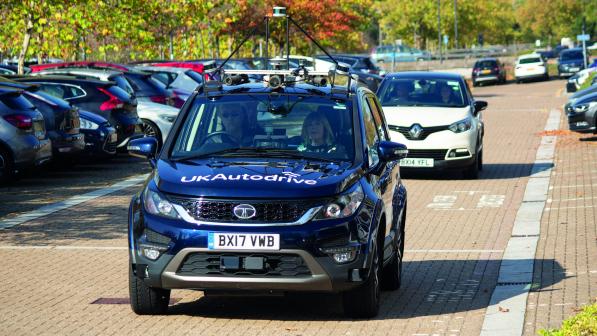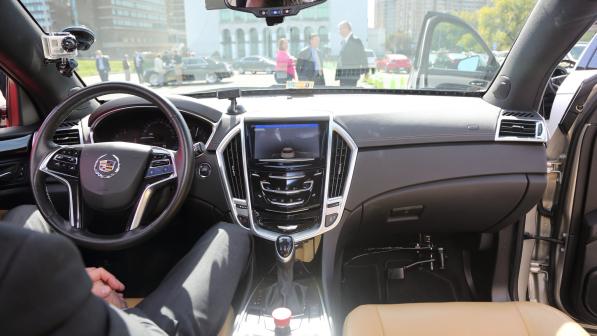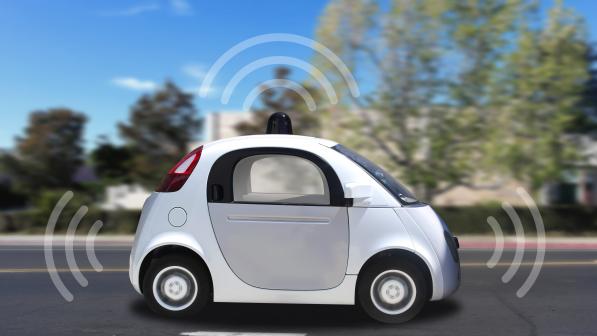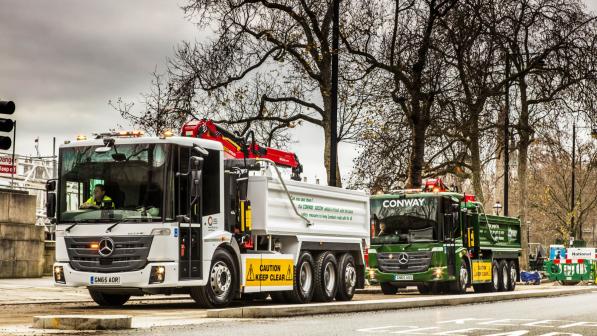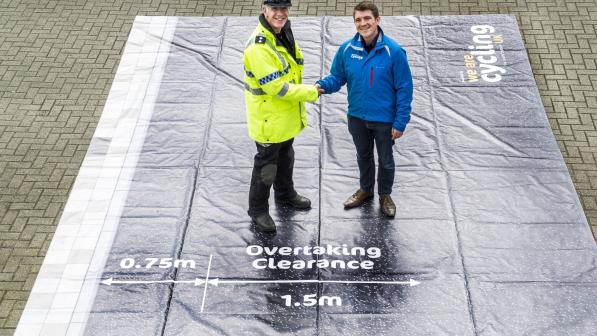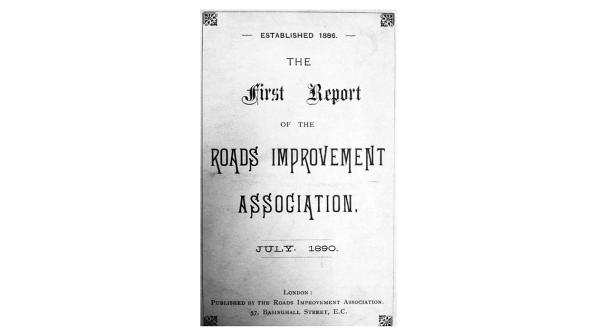Will the laws for driverless cars protect cyclists?

Cycling UK’s main concern, as outlined in our submission to Parliament, is that if autonomous vehicles were to cause an injury or death to a cyclist, there is no means proposed to prosecute criminally any responsible party, whether that is the developers of the dangerous software, or someone who has hacked the system.
With over 220,000 road traffic injuries and deaths per year, nearly all thanks to human error, gallons of ink have been spilled arguing that the sooner we can hand over control to a safe, autonomous system, the better.
However, the day on which the last human driver relinquishes control of a tonne of high powered metal is likely to be decades away, despite the Transport Minister’s optimism, disputed by other experts, that driverless cars could be on our roads by 2021. Instead, we face years of continued carnage on the roads, and the interim period may even get worse, as drivers become less and less attentive, handing over more and more control to immature technology that may be unable to cope with critical emergency situations.
Risks to cyclists and pedestrians
Autonomous vehicles will initially be best placed to deal with the roads that are already the safest: motorways and dual carriageways...they are least equipped to deal with those that are riskiest - the urban streets used by pedestrians and cyclists.
Chris Peck, Cycling UK Consultant
Autonomous vehicles will initially be best placed to deal with the roads that are already the safest: motorways and dual carriageways, where they will encounter limited vehicle types, and those vehicles tend to behave consistently. They are least equipped to deal with those that are riskiest - the urban streets used by pedestrians and cyclists. The risk is that partial automation will lower the barriers to car use, making people ever more reliant on cars as their primary transport. By simplifying the driving task right up until the point at which drivers have to resume control in the most challenging locations, there is the risk their skills may be blunted by not having to concentrate.
In a summary of the psychological literature on the phenomenon, one commentator writes: “As software takes over more steering and braking chores, the person behind the wheel won’t have enough to do and will tune out. Making matters worse, the driver will likely have received little or no training in the use and risks of automation. Some routine accidents may be avoided, but we’re going to end up with even more bad drivers on the road.” (Carr, N. 2014, The Glass Cage, p. 91)
Autonomous vehicles will also capture huge amounts of data, but it’s not clear whether it will be possible for that data to be used to ensure safety of pedestrians and cyclists. For instance, if an autonomous vehicle overtook a cyclist too closely, causing them to be destabilised and crash, will police be able to easily retrieve data from the vehicle itself, or from witness vehicles? This is already a problem with the event data recorders in our current fleet.
There are other problems: the dream of autonomous vehicles could take over transport policy, displacing other modes. The fear is that schemes to promote public transport, walking and cycling will lose priority as people place all their eggs in the autonomous vehicle basket - as happened in the 1950s when transport policy priorities shifted towards the private motor car. We’ve already seen hundreds of millions spent on research for autonomous vehicles, and charging points for electric vehicles, and it is likely that this will only grow over time.
Assisted vs Autonomous
In the Bill currently before Parliament, the Government propose definitions of Advanced Driver Assistance Systems (ADAS), as distinct from Autonomous Vehicles (AV). ADAS vehicles are already on the roads: they use systems such as automatic emergency braking, advanced cruise control and systems to maintain lane discipline. These vehicles require the driver to remain in control of the vehicle at all time. For AVs, by contrast, the vehicle’s systems have - at least for some of the time - complete control of vehicle’s operation.
This dichotomy of ADAS/AV is a simplified version of the definitions which were set out a few years ago by the Society of Automotive Engineers, which explained six levels of automation, ranging from Level 0, where vehicles have no automated technology, to Level 5, which can travel anywhere by itself. Within these levels lies very significant differences in the likely safety impacts from these different types of vehicles - particularly for vulnerable road users.
Will it be safer?
It may well be the case that a fully autonomous, all level five fleet with no human drivers will be safer, and that with it could have other benefits. It could free up land currently used for car parking, make most road signs and traffic signals and other infrastructure redundant, while enabling much more appropriate speed limits and access restrictions to be imposed with fewer concerns about enforcement challenges. It’s possible that an autonomous future could mean a fully flexible public transport system responding to demand and using vehicle capacity much more efficiently than at present.
However, that dream is a long way off, and may well never happen. In the meantime, a fleet of mixed autonomous and human controlled vehicles will continue to have real problems. Automated systems, for instance, will have instant reflexes, but corresponding human drivers will still be slow to respond, particularly if - supported by assisted driving systems - they aren’t paying much attention to the driving task.
Gaps in the bill
The aim of the bill is to prepare ground for a system of insurance to ensure cover in case of crashes when the autonomous mode is being used. Currently it would be impossible to insure these vehicles, and thereby give assurance to drivers that they would not be personally liable in the case of failings of the system.
Unfortunately the bill creates some ambiguous areas, particularly around when and where technology can be used safely. Cycling UK wants to ensure that the first use of these devices is on controlled roads (ie, motorways), where the possible risks to cyclists and pedestrians are minimised. As the technology fully matures, sharing urban streets may become possible, but there will be need for robust standards to ensure that the deployed technologies will be safe, and adequate penalties for companies or individuals that don’t meet those standards.
We also want to make sure that there are adequate criminal penalties available to target those who hack into systems, or for drivers who don’t follow the manufacturers restrictions, but still manage to use the autonomous system in places where it is illegal. So far the Government has only suggested that such behaviour will be dealt with under changes to the Construction and Use Regulations 1986, contraventions of which currently only command fines of up to £5000.
There has been some discussion of these issues as the Bill has progressed through its Committee Stage, but Cycling UK will continue to press for regulations that will ensure that there are adequate safeguards in place before widespread use of autonomous vehicles is permitted.
